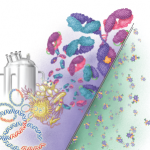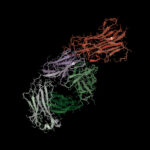In March, the ACR released a white paper designed primarily to help rheumatologists and rheumatology health professionals gain an understanding of biosimilars.1 This research-based education piece examines the scientific, economic and prescribing issues related to the use of biosimilars. Now, the ACR has released an update to its official position statement on the use of biosimilar therapies for rheumatology patients that further addresses extrapolation and emphasizes the importance of rigorous post-market surveillance as part of the approval process. The position statement will mainly be used to share the ACR’s perspective and discuss the various issues with external stakeholders for the benefit of the rheumatology subspecialty.
The previous position statement on biosimilars was updated in May 2016 when just one biosimilar therapy had been approved for the treatment of a rheumatic disease. The FDA has since approved five more biosimilars to treat various rheumatic diseases and issued guidance documents that provide more details on how biosimilars will be implemented in the U.S.
“With the regulatory landscape rapidly changing, we felt now was an appropriate time to revisit our 2016 statement to ensure it outlines all aspects of biosimilar adoption we would like to see addressed as these drugs become available on the market,” says ACR President David Daikh, MD, PhD.
The Position Statement
The majority of provisions outlined in the 2016 statement remained unchanged, but the new statement includes expanded views on the use of extrapolation during biosimilar approvals. Extrapolation would allow the FDA to simultaneously approve a biosimilar for all indications of its reference drug instead of requiring individual clinical studies for each indication. The position statement recommends that extrapolation be pursued with caution, with a contingency that regulatory agencies and manufacturers work with clinical experts without conflicts of interest to identify a minimum slate of disease states in which biosimilars should be tested before extrapolation to additional indications is granted.
The statement makes clear that the decision to substitute a biosimilar product for a reference drug should be made only by the prescribing provider: “Providers must retain the right to write ‘dispense as written’ for all prescriptions, including biologics.”
To address safety concerns, the statement reinforces the white paper’s call for postmarketing surveillance studies in children, as well as adults. It also states that the Best Pharmaceuticals for Children Act (BPCA), which reauthorizes the pediatric studies provision of FDA Modernization and Accountability Act to improve safety and efficacy of pharmaceuticals for children, should apply to biosimilars.
Looking Forward
As the white paper concludes, “Communication between providers, pharmacists and patients will be critical to alleviate anxiety and reduce skepticism regarding the use of these newly available agents. We remain optimistic that the use of biosimilars will improve patient access to biologic agents, allowing continued delivery of high-quality healthcare to be realized at a lower cost to the individual patient.”
Rheumatology leaders hope to see some of the concerns and principals outlined in the position statement addressed by the FDA and regulatory agencies moving forward.
With the release of the position statement, Dr. Daikh adds, “As the FDA moves to bring additional biosimilar therapies to market, we will continue to push for policies that will give providers the data they need to be confident that biosimilars are safe, effective options for them to use when deemed clinically appropriate.”
Keri Losavio is the staff editor of The Rheumatologist, ACR@Work and eNewsRheum.
Reference
- Bridges SL Jr., White DW, Worthing AB, et al. The science behind biosimilars: Entering a new era of biologic therapy. Arthritis Rheumatol. 2018 Mar;70(3):334–344.



